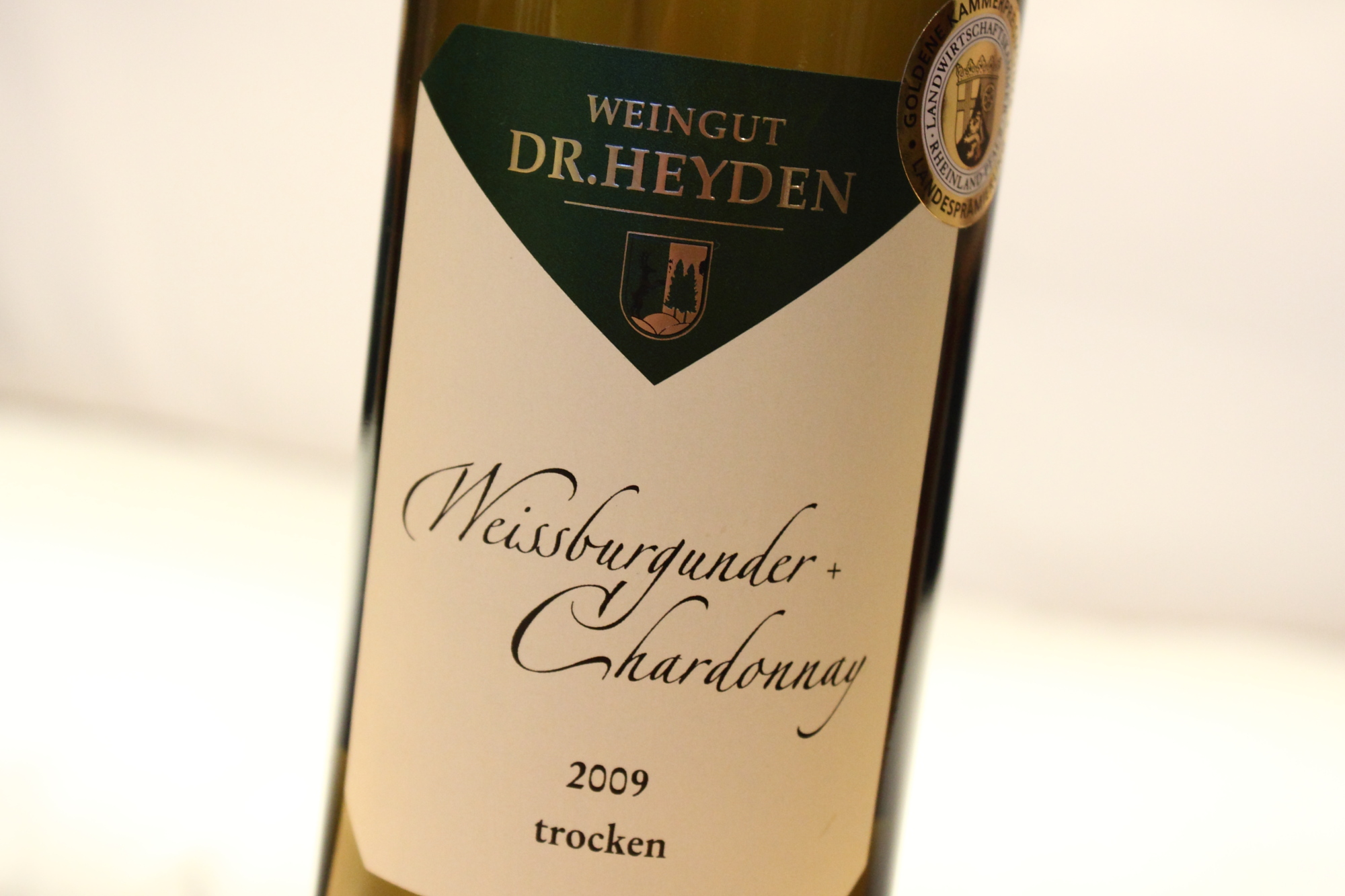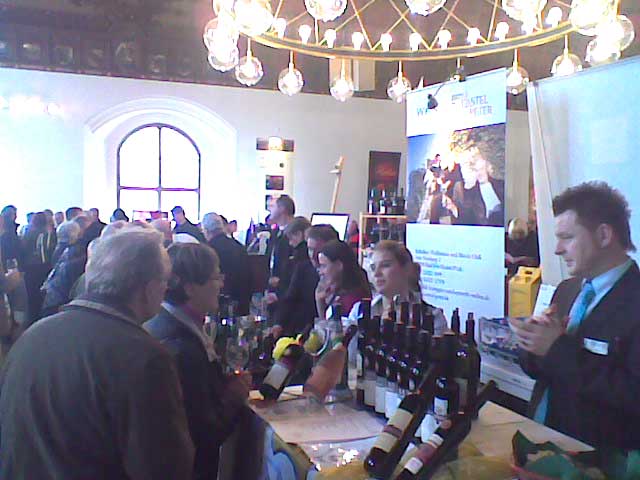Dr. Heyden, Chardonnay & Weißburgunder, 2009
After taking a look at Pfalz wines in the last three reviews, time to bring you up to date on Germany's other bread-and-butter region, Rheinhessen. Many german wine drinkers turn there for lower-priced, everyday wines that they order in larger quantity, but don't necessarily talk about the way they would about last weekend's Großes Gewächs or the Mosel Auslese they serve at their own posh dinner party. Everybody has their place of choice - at the moment, mine is Dr. Heyden, whose workhorse wines are carefully made and very dependable, but who also overachieve significantly with their stylish and concentrated old vines-Silvaner and their truly excellent Frühburgunder. In what has become a little tradition, I have been going to see Frank Heyden behind his table at a twice-yearly wine fair in Munich for two years now, both to have a chat and to slip him a follow-up order.

Another wine that he served me there is his Chardonnay and Pinot Blanc cuvée. I liked it there and then. But how will it fare under the cruel light shone on the Wine Rambler's tasting table, where neither friendship nor enmity can hope to sway the incorruptible critic?



